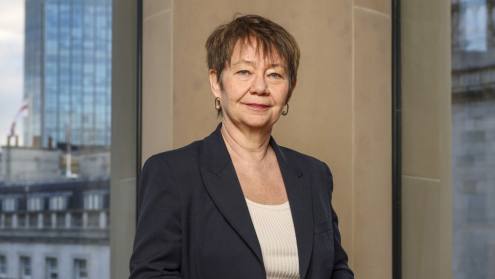Peru's Central Reserve Bank has maintained a very pragmatic approach throughout the extraordinarily challenging past few years. Two of its top trading partners, the US and Europe, have been badly affected by economic recession and an ongoing debt crisis. At home, fluctuating global commodity prices left its producers battling with uncertainty.
As the global financial crisis gathered pace, the bank quickly lowered the country's interbank interest rate to sustain lending flows. It plunged from 650 basis points (bps) to 125bps. Only recently did it rise to 150bps. Together with Peru's ministry of finance, the central bank swiftly drew up countercyclical measures that were promptly communicated to reassure the markets.
The Peruvian central bank's fast and effective action was typical of a country that has been learning over recent years how to cleverly boost its economic growth. An example of this can be seen in the way in which Peru - one of the leading global producers of minerals and metals - was able to take advantage of high export prices using the government's aggressive trade liberalisation programme. Actions such as this meant that in 2008 Peru's gross domestic product (GDP) expanded by 9%.
Even the world recession and the accompanying dip in commodity prices could not reverse this expansion. This meant that in 2009 growth continued, albeit at a much smaller rate of 1%. Current GDP growth projections for 2010 are above 6% - and the year-on-year growth for the second quarter of 2010 was a jaw-dropping 9%.
Expansion question mark
However, given that domestic demand will remain low, and the fact that the country has a skilled labour shortage, a question mark hangs over whether Peru can sustain its rate of expansion.
"Of course it can," says Julio Velarde, governor of the Central Reserve Bank. "But you have to raise investments, locally and internationally, [particularly in] technology and human capital." Bottlenecks could be created in the labour force, according to Mr Velarde, particularly in the commodities sector. Professionals such as geologists, for example, continue to be very much in demand.
As the Peruvian economy grows, so does its financial system. Despite showing a flat economic growth rate in 2009, the country's banking system as a whole gained 1.5 million new customers in the same year, a 25% increase from the previous year, with a 15% growth in loans.
With lending activities supporting an expansion in the banking sector, it is now crucial that Peru also creates the right conditions to develop the local capital markets. The central bank is well aware of this and is currently working on a mortgage-covered bond law that will encourage greater issuance and help to liven up the financial system.
The bank intends to show the same resolve it demonstrated in containing the effects of the external financial crisis, in its efforts to contain the inevitable repercussions of Europe's dire economic prospects on Peru's trade flows and commodities prices. Apart from direct effects on Peru's economy, a default within the eurozone would also make the management of the central bank's reserves a more difficult task.
Currency risk is the perennial worry of central bankers. Mr Velarde will not have forgotten the episode six years ago when the central bank included Canadian dollars in its reserves, only to find that the costs and time spent monitoring the currency proved unworthwhile. Instead, a better solution turned out to be an indirect and more diversified approach using exchange-traded funds to follow certain well-placed economies.
As with his peers around the world, Mr Velarde does not feel enthusiastic about any of the traditional reserve currencies: "It's not a beauty contest - you have to go with the one that is least ugly," he says, echoing what investors are repeating around the world. Indeed, if the emerging markets keep putting the developed world to shame with their level of growth and good macroeconomic policies, he does not rule out that at some point in the future his bank might hold more exotic currencies, which would offer 'beauty' and diversification in its reserves management.
"Even if you are the best [portfolio manager] in the world, you want to be diversified," he says. "We have improved our techniques of managing portfolios through exchange-traded funds, for example. I suppose in the future we will [increase the number of currencies we hold]. I might say something [controversial] but the Peruvian sol or the Chilean peso could be part of the reserves."













